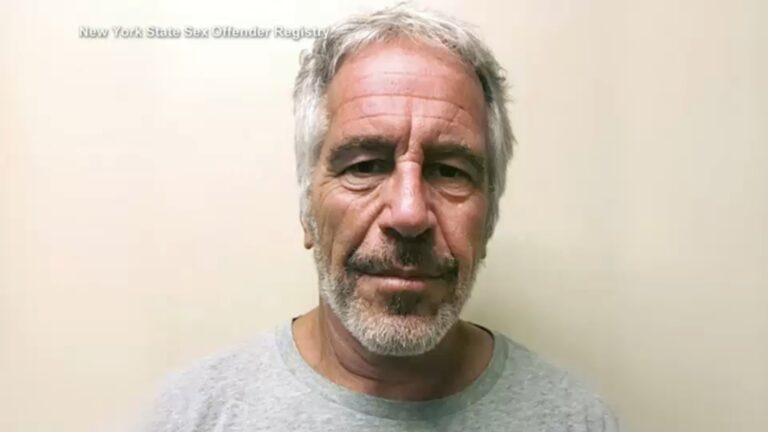
SAN FRANCISCO (KGO) — It was supposed to be a state-of-the-art transit facility for Muni, and new housing built above it would have been the icing on the cake. But in the end, it proved too good to be true. Facing a massive budget deficit, the SFMTA has scaled back the project, despite much-needed housing.
Muni’s chief mechanical officer for Fleet Maintenance showed ABC7 News the old Potrero bus yard built in 1915.
This is where Muni maintains part of its fleet of zero-emission electric trolleybuses powered by overhead wires.
While the buses have been modernized, the yard has been stuck in the past. Take the maintenance pits.
“So today in order to work on some of these buses, you have to climb down in this pit with limited clearance, sometimes you’ll find yourself sitting on a stool or having to climb on step ladders to work inside and underneath this vehicle. With a new modern-day facility, we’d be able to lift this vehicle up off the ground, working standing up where it is safe and more ergonomically for our employees,” explained Michael Henry, Chief Mechanical Officer for Fleet Maintenance.
A new yard would provide more space to store buses, increasing from 156 to 246.
MORE: San Francisco mayor proposes denser housing to tackle affordability crisis
Muni says the new facility would have better air flow and lighting for workers – something that’s lacking today.
“If you can imagine the facilities are over 100 years old, how old do you think the bathrooms are? Equally as old. In addition to the work that we do by being more efficient, we can put more vehicles out on the road,” added Henry.
But what if Muni had a modern bus storage and maintenance transit facility on four levels and up to 575 units of affordable housing built above it? That was the initial plan and just a year ago, the San Francisco Board of Supervisors gave the project its blessing.
A reminder that this concept started in 2017. Here’s why it’s taken so long.
The Emerald Fund was one of three real estate development companies to put forward a proposal.
“The concept was a great one, you want to maximize your land use and putting housing above a bus terminal is a great idea with retail and community services on the bottom. It was a great concept,” said Marc Babsin, Principal of the Emerald Fund real estate developers.
It was supposed to be the nation’s first joint public transit and housing development.
But the concept went from looking like a small neighborhood to having most of the housing gone from the plans.
“We’re just not going to be able to deliver the same amount of projects with the same scope that we originally anticipated,” said Sean Kennedy, SFMTA’s Chief Planning and Delivery Officer.
MORE: What to know about Muni’s budget deficit, efforts to save transit agency
Getting into the housing game in San Francisco has never come easy, especially when the movers and the shakers preferred that the housing, in this case, be mostly affordable.
“I fought for the language to say up to 100% but at least 50% affordable. The agreement was to have mixed-income housing which is where we got to,” said San Francisco Supervisor Shamann Walton, who represents the district where the yard is located.
But even the mixed housing formula proved too costly. Six months ago, the SFMTA was hit with a financial reality.
“Which is most acutely a $300 million operating budget deficit starting next fiscal year. We have to readjust and take a look at all of our projects across the portfolio projects that the MTA is doing including this one,” said Kennedy.
Today, only 100 units of affordable housing on Bryant Street will be built next to, not on top of, the bus yard. The mayor’s office of Housing and Community Development has agreed to financially support part of those construction costs.
What could have been built here is now highly improbable because the massive podium that would have supported all that housing has also been eliminated from the project.
Sunny Angulo, the former legislative aide for then Supervisor Aaron Peskin, believes the city and state could have done more to fund this project.
MORE: Gov. Newsom approves $750M loan for Bay Area public transit
As a result, San Francisco continues to lag behind on the number of units required by the state to build by 2031.
“I think it’s a missed opportunity to kind of walk away from this and go this is the best that we can do after years and these units have evaporated overnight,” said Angulo.
So the focus now is on building that new bus yard.
As of Thursday, the developer, the Potrero Neighborhood Collective, will pay the cost to build the bus yard and SFMTA has agreed to repay them over 30 years.
We asked if this is something SMFTA can afford, given its deficit.
“Exactly, so that is one of the things we’ve been trying to get the number down,” said Kennedy. For SFMTA, it’s still not a done deal.
“Kudos to SFMTA for going for it. I think their vision was a great one and then it got complicated, it got complicated and it got dragged out,” said Babsin.
It’s an overused cliche but it has to be said, “timing is everything.”
Copyright © 2025 KGO-TV. All Rights Reserved.

Duncan Meyers, founder of BDJOBSTODAY, shares expert career advice, job market insights, and practical tips to help professionals grow and succeed in their careers.



